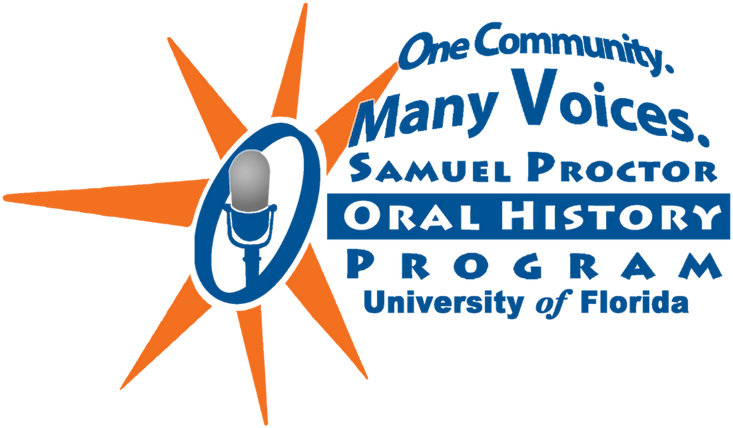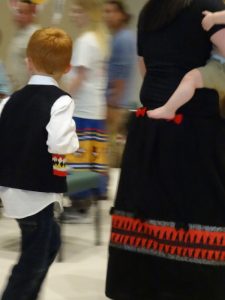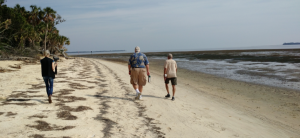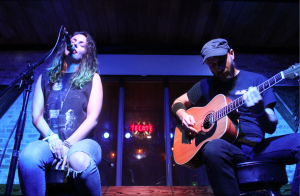
From 2018:
Summer 2018 trip to the Poarch Creek archives:

In the summer of 2018 a SPOHP team of undergraduate students, graduate students, and SPOHP alumni returned to Atmore, Alabama to conduct interviews with members of the Poarch Band of the Creek Indian Nation. Students learned the technical skills necessary to set up cameras, lighting, and audio equipment at the tribe’s archive building, as well as in homes on the nearby reservation. The team was honored to be invited to the Evening of the Elders, where there was a community dance performance. In addition, the tribal council presented audio clips from elders, which had been digitized from cassette recordings by SPOHP technologists. Hearing the voices of revered elders, some of whom had passed away, brought an emotional reaction from the attending crowd gathered in the new tribal community center.
Interviews with Scientists on Seahorse Key:

In 1952, the University of Florida established its marine laboratory on Seahorse Key, part of the Cedar Keys National Wildlife Refuge. The Seahorse Key Marine Lab oral history project is preserving the faculty, staff, student, and community memory of UF’s history on the island. It was made possible by a generous grant from the UF Center for the Humanities and the Public Sphere. SPOHP used a special stabilizing camera to film interviews while walking the beach.
Fall 2018 Internship- exploring Punk Rock:

SPOHP started recording interviews with people involved in the punk scene, prioritizing the voices of women, people of color, and queer punks who have always been part of the scene but are not always visible in popular representations of it. We are also making an effort not only to interview band members, but also general showgoers, zine makers, venue operators, and anyone else willing to share some of their experiences. This fall, our internship will add to and further process this collection, and also start creating things like podcasts and zines to share these stories and shed more light on how people can successfully create spaces of creative resistance, and what kinds of potential they offer for inclusivity and empowerment.